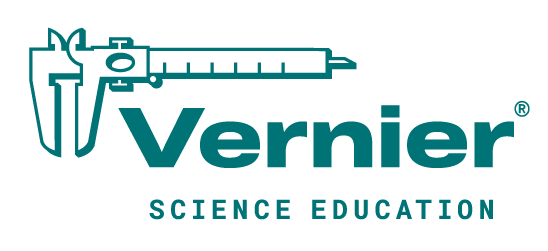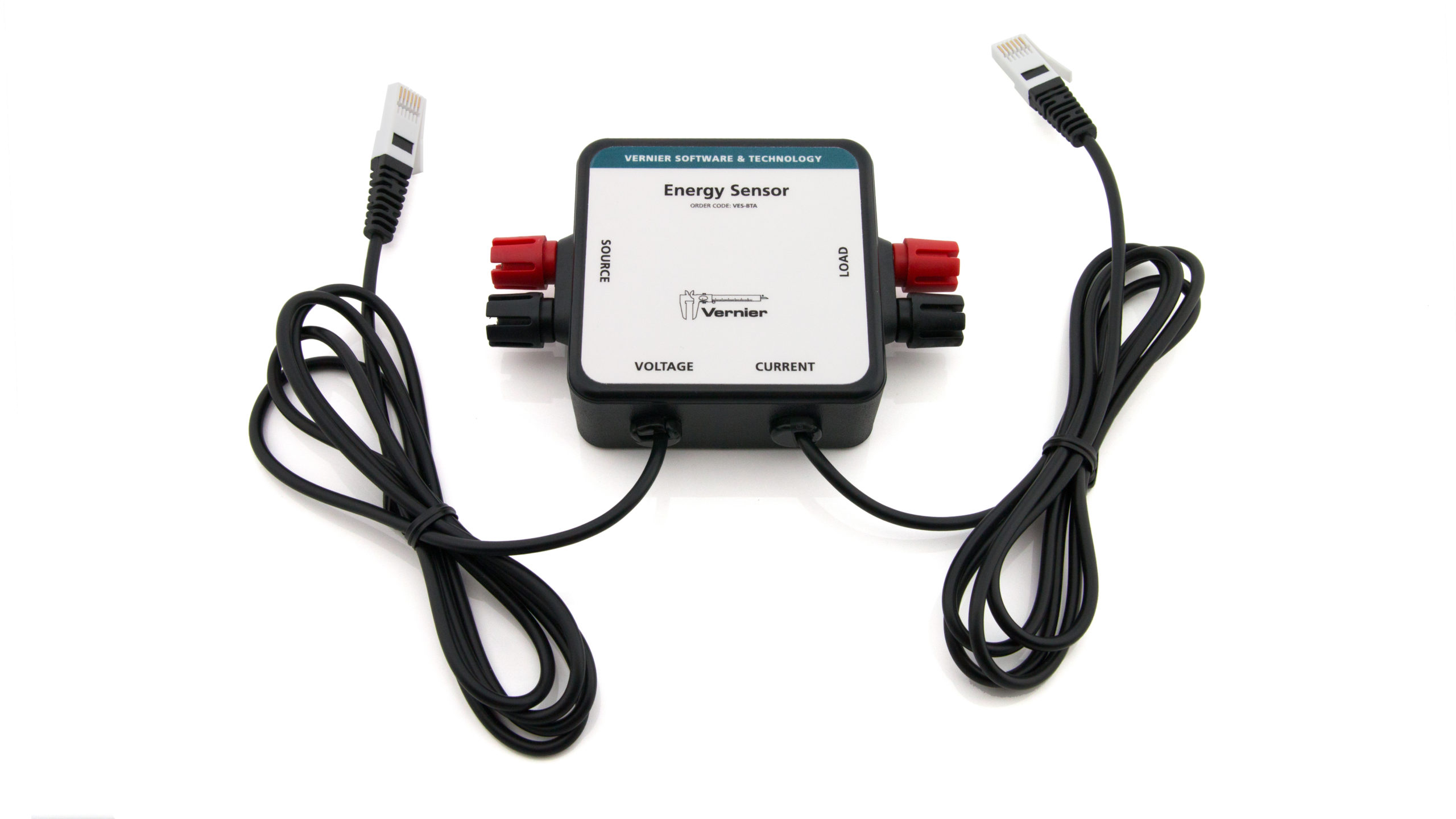Troubleshooting
- Primary Test: Connect either voltage or current lead to an interface and launch the data collection software. Vernier Energy Sensor should appear as a single sensor appropriate to the lead that was plugged in. Connect the second lead, then select to start a new experiment. You should see graphs and/or meters for potential, current, resistance, and power.
- Secondary Test: If the above steps are successful and the unit is still not behaving properly try the following:
- Zero the potential and currents sensors while shorting out the Source terminals.
- Remove the short.
- Connect a known voltage source (~2 – 5 VDC) to the Source terminals of the Energy Sensor.
- Connect an appropriate resistor that would draw about 100 mA of current from the source, e.g. for a 3V source use a 30 Ohm resistor.
- Verify the meters/gauges in the software report similar potential and current readings.
- If the step above is successful, the Energy Sensor is operating correctly and the issue is somewhere in the components that are connected to the Energy Sensor. Double check your wiring, and make sure all connections are secure.
TECH TIP VIDEO
Additional Troubleshooting
- Readings from Vernier Energy Sensor are noisy.
- Can I use the Vernier Energy Sensor in place of other voltage or current sensors?
- What software do I need to use a Vernier Energy Sensor?
Specifications
- Source input range
⚬ Potential: ±30 V
⚬ Current: ±1000 mA - Linearity
⚬ Potential: 0.01%
⚬ Current: 0.01% - Typical resolution (12-bit)
⚬ Potential: 0.016 V
⚬ Current: 0.52 mA - Input impedance
⚬ Potential: > 2 MΩ - Insertion resistance
⚬ Current: 0.1 Ω - Frequency response
⚬ Potential: –3 dB @ 160 Hz
⚬ Current: –3 dB @ 160 Hz - Stored Calibrations
⚬ Potential: slope –12.526 V/V; intercept 31.315 V
⚬ Current: slope –422.09 mA/V; intercept 1055.25 mA
Calibrations
Calibrate? No. The probe is set to match the stored calibration before shipping. If you choose to calibrate the probe, conduct a two-point calibration using two known potentials and currents.
You may also zero the probe by shorting out the leads and then choosing the Zero option in the data collection program. If you zero the probe, it will adjust the calibration offset but does not adjust the calibration gain.
Related Products
- KidWind Products
- Vernier Variable Load (VES-VL)
- Vernier Resistor Board (VES-RB)
- Go Direct® Energy Sensor (GDX-NRG)

